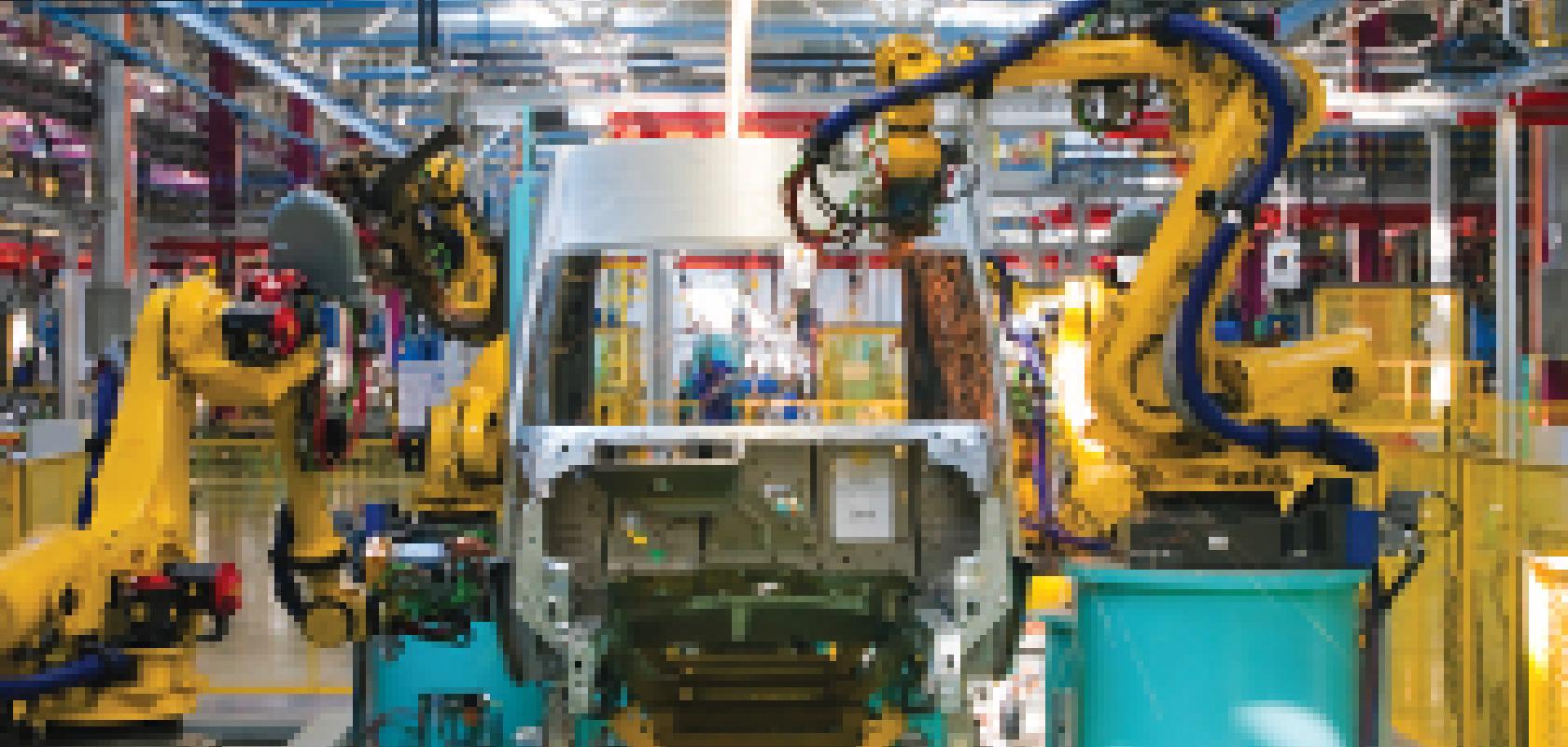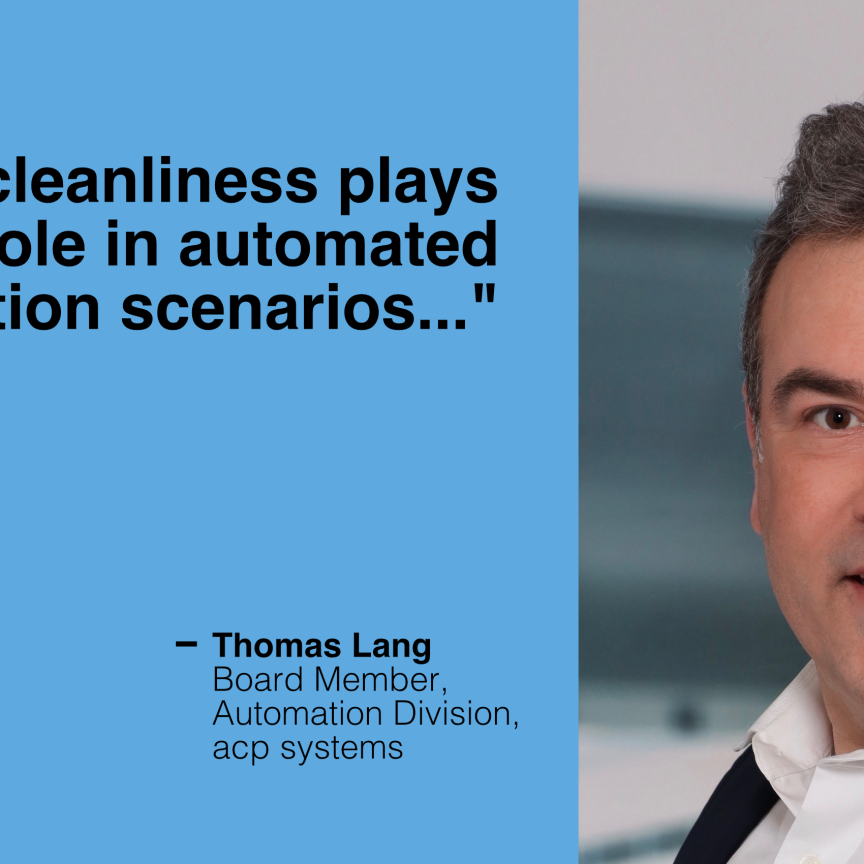Machine vision and automation tend to go hand in hand. Vision can make manufacturing lines more flexible in order to cope with product variation, rather than having individual lines for each product. In addition, the demand for mass-produced precision parts requires a level of reliability in the manufacturing process that can only be provided by automation. In Asia, the growing middle class is driving wages up, meaning companies with factories in the Far East are turning to automated production to keep costs down and stay competitive.
Sam Lopez, director of sales and marketing at Matrox Imaging, has seen examples of this in China – the cost of living has increased over the past few years and wages are rising, he noted. This has meant that labour costs are increasing as well. He explained that the knock-on effect is that a lot of factories are automating because it doesn’t make sense to pay high costs for more staff.
He said: ‘It used to be that in China, they weren’t worried about automation. Whenever you had a task to do you put people there and it was cheap, fast and relatively reliable. But now people are demanding higher quality for everything.
‘China has come a long way; it used to be almost synonymous with cheap products, but today most iPhones are made in China – the electronics industry has really helped push the country’s development. A lot of this has been made possible by automation.’
But Lopez added that Matrox is seeing a number of factories opening up in North America and Europe. ‘In order to stay competitive with the factories in Asia, they [European and US companies] have to take full advantage of automation,’ he added. ‘This means that from the start they are more efficient, have better throughput and produce higher-quality products.’
Factory automation in the UK and Europe is growing healthily as Mark Williamson, director of corporate market development at Stemmer Imaging, has witnessed. He said: ‘This is mainly because a lot of companies are trying to bring back the manufacturing that went to the Far East or are wanting to compete while keeping complex manufacturing nearer to home. By using automation, you can be competitive when building a product.’
Williamson explained that there has been in a shift in the general factory automation market which is, at least in part, due to easier to use, less expensive systems. ‘About 10 years ago, half of our business was with original equipment manufacturers that would buy the components and build them into a vertical market product; the other half went to vision specialist integrators. The latter would do the programming themselves and build vision systems from the ground up to do what their manufacturing customers wanted.’
But now the big integrators are becoming more specialised and addressing the complex applications that 10 years ago just were not possible. Stemmer Imaging still supplies these companies with components for more demanding applications. However, Williamson explained that simpler tasks have divided the market into thirds, with factory companies now opting for off-the-shelf solutions that are simple to integrate and easy to train an operator.
‘It has taken a long time for the algorithms used to become clever enough, and the software advanced enough, to make the applications simpler,’ Williamson said. ‘This is helped, largely by driving the processing power of smart cameras up; 10 years ago this was too slow. This hindered the complexity of an algorithm.’
Flexible manufacturing is also being strived for. Where it was the case that it would take months for a manufacturer to adjust its production line for a new model, now multiple models can be processed on the same line – and this has been made possible by software and vision. Williamson stated: ‘Now, an automation line doesn’t need complete retooling for a new part or model.
‘It’s a trend that is happening now, flexible manufacturing has been around for a while but it is becoming more important.’ He continued: ‘It is evident in the automotive industry. Ten or 15 years ago there were a lot fewer models; now, each production line has several different models randomly coming down the line, and while there has always been an element of personalisation or customisation, this is now becoming more prominent.
‘The key for me is that machine vision doesn’t have to only be used for inspection now; it is now a crucial part of the manufacturing process. It can be used to guide a robot, or if there are multiple products being used on the same production line, machine vision can be used to identify which component or model it is and apply any required variants to the process.’
He explained that the key advantage was that now, if there is a series of products being manufactured on the same line but with slight variation, they may need different processing and inspection. This could be placement of sound deadeners or glue, but, depending on the model, it may be in different places.
‘Vision is being used to provide feedback and control of the process,’ Williamson said. For example, a vision-guided robot can apply glue to a part by tracking along its edge, rather than just carrying out an inspection of a glue line. Another example is using vision to measure the fat, the lean, and the total volume of meat in order to cut slices of a similar thickness and weight.
The core of most successful automated systems is a programmable logic controller (PLC), so the next challenge is easy integration of the vision system with the PLC. Williamson said: ‘To make the integration of vision simple, you want a camera that can communicate directly with the PLC in its own language which effectively removes a step from the integration. Doing this well can be quite a lot of work but it makes the integration much easier; you end up using standard protocols.’
Typically, Matrox aim to work with an integrator or line-builder as opposed to an end user. Lopez explained that these line-builders integrate the company’s vision solutions into a production line. Because of this, a vision system must be able to work with a variety of different automation equipment, such as robots from different companies.
Lopez said: ‘What we do is generalise the interface so that our systems can be used with any of the major robot manufactures’ systems. Robots all have a controller; it’s our responsibility to make sure the robot understands what the system is saying from the vision side.’
But standardisation doesn’t mean the vision systems are less specialised. ‘You need to pick the right robot for the job; but once you have done this the interface itself is quite straightforward,’ said Lopez. ‘It’s just making sure you have the right software that can talk to any robot. We have made the discussion between the camera and the robot quite transparent.’ Matrox’s software provides a drop-down list to allow the user to select a manufacturer. This calls up all of the required interfacing languages.
This now frees the integrator to choose the best camera for a specific application. Lopez continued to say that once this is done ‘we then step in and solve the vision part of the applications. Very few applications are plug-and-play; there is always some customisation or tailoring. This is dependent on what type of automation the customer is after, the working environment, and the required performance. This is why the line builder is such an important part. They are the ones that know what interactions each part of the machine has with other parts of the machine.’
Stemmer Imaging’s Williamson pointed out that, in the factory automation space, the fundamental drive is people wanting to save money and improve their processes, so camera selection is crucial. He said: ‘Within the cameras, higher-resolution sensors offer benefits to some applications but not to others. It is similar with the processing software’s power improving; it is important and data can be handled quickly and more intelligently, but this is stabilising now and a lot of applications don’t need the fastest.’ He said that now it is important to meet the demands of the customer, advise them on which product to choose, and educate them on the limitations of each system.
‘We have already got vision systems that are getting easier to use, and there has been a massive advance in user interfaces due to tablets, smart phones etcetera. What we will see in the next 10 years is even more intelligent configuration of the system. This will make it easier for people who are not experts to install and run a system, and this is where our efforts have to go. It’s trying to put knowledge into the system so it can understand its task and accommodate accordingly.’
Williamson pointed to the environment as one example of the things that can catch people out when automating a process. ‘You have skylights and windows in the factories, and when the environment changes the results can be inconsistent. There needs to be at least a basic knowledge of the limitations of cameras compared to the human eye, and aligning a system with the right filters or covers to make it work.’
Stemmer Imaging offers courses to help potential customers of machine vision understand the benefits and flaws of using a camera system. ‘When a system is installed without this expertise, it works but then it fails. They will then say the vision system is the problem but the components are only as good as their installation process.’
Cognex also offers training courses on automating production for its customers. Thomas Nepstadt, senior field product marketing manager at Cognex, said: ‘Individuals have different ways of learning systems. Cognex offers webinars, e-schools, regular training, and onsite training to meet the individual requirements of our customers. The challenge customers have today is to cope with all the new advances in industrial vision and map these to new machine concepts.
‘At the end of the day customers require solutions; imaging is an aspect of this. What is more important though is an overall solution path. For this Cognex provides products that gives customers the best cost-for-performance solution.’
 Tom Eddershaw is a technical writer for Electro Optics, Imaging & Machine Vision Europe, and Laser Systems Europe.
Tom Eddershaw is a technical writer for Electro Optics, Imaging & Machine Vision Europe, and Laser Systems Europe.
You can contact him on tom.eddershaw@europascience.com or on +44 (0) 1223 275 478.
Find us on Twitter at @ElectroOptics, @IMVEurope, @LaserSystemsMag and @ESTomEddershaw.


